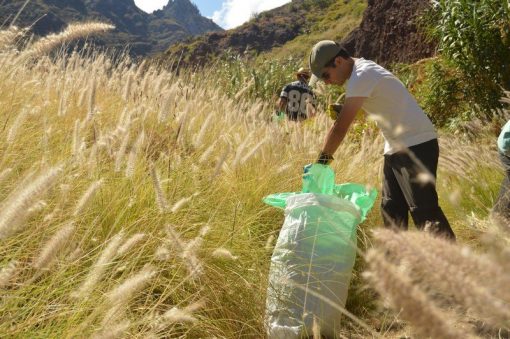What is RABO DE GATO?
Rabo de gato (Pennisetum setaceum), cat´s tail in literal translation, is a spanish name for an
invasive plant of African origin that was introduced in the Canary Islands in the 40's.
It can reach one meter of height and produce more than 10,000 seeds in its numerous
spikes.
This plant is mature in just 3 months and adapts to almost any type of terrain.
For this reason, it is one of the most invasive exotic plants for the natural environment,
managing to proliferate in such a way that currently occupies one of the largest areas in the
Canary Islands, surpassing other native species.
In some islands of as much biodiversity as Tenerife, the rabo de gato is a big environmental
problem, that we all must tackle.

How to fight against rabo de gato?
1. Cut with the sickle, scissors or by hand all the spikes of the plant carefully and do not
disperse the seeds.
2. Deposit all the seeds in a plastic bag protected by another raffia bag to prevent
breakage.
3. Extract the plant with roots, helping with tools if necessary.
4. Pocket the bank of seeds left on the ground as well as the remains of roots.
5. Pile the plants uprooted in a field where they cannot re-root to the roots do not
touch the ground, making sure that the wind does not move it.
What to never do with rabo de gato?
FIRE
The heat of the fire favors the growth and the germination of the seeds of the pyrophyte
plants as it is the case of the rabo de gato, so they should never be burned.
MECANICAL TOOLS
Do not use mechanical tools such as motor-cutters, blowers, etc. to eliminate rabo de gato
or its seeds from the ground, since it would facilitate its dispersion.
STOP FIGHTING
The work must be continuous, in order to control the following sprouts.
